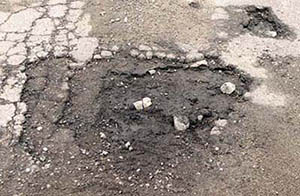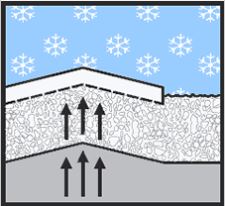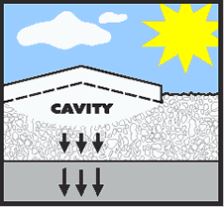The material available to us in winter is called cold patch - so named because it remains workable even in the coldest temperatures.
Aside from the materials used, consideration also must be given to where a pothole is. If we're patching on the highway, the impact of our repair operations on traffic must be taken into account - as well as the safety of our workers. In these instances, we move swiftly to lay material and get off the road - especially in times of heavy traffic. We may return to the same location for more work when traffic is lighter.
As part of our effort to make these repairs more efficient and cost effective, we employ a device called a hot box. These units attach to our trucks, and heat and insulate cold patch, making it more effective. We also use equipment such as rollers and plate compactors that help us achieve a more durable patch.
The deteriorated condition of our roads in Rhode Island results in more potholes, especially on secondary roads. Currently 40 percent of state roads are rated fair or worse. Through our Pavement Preservation Program, we work aggressively to address roadways before they become so poor that they need a costly fix. A large gap exists, however, between what can be accomplished at current funding levels and the monies needed to address our system as a whole.





